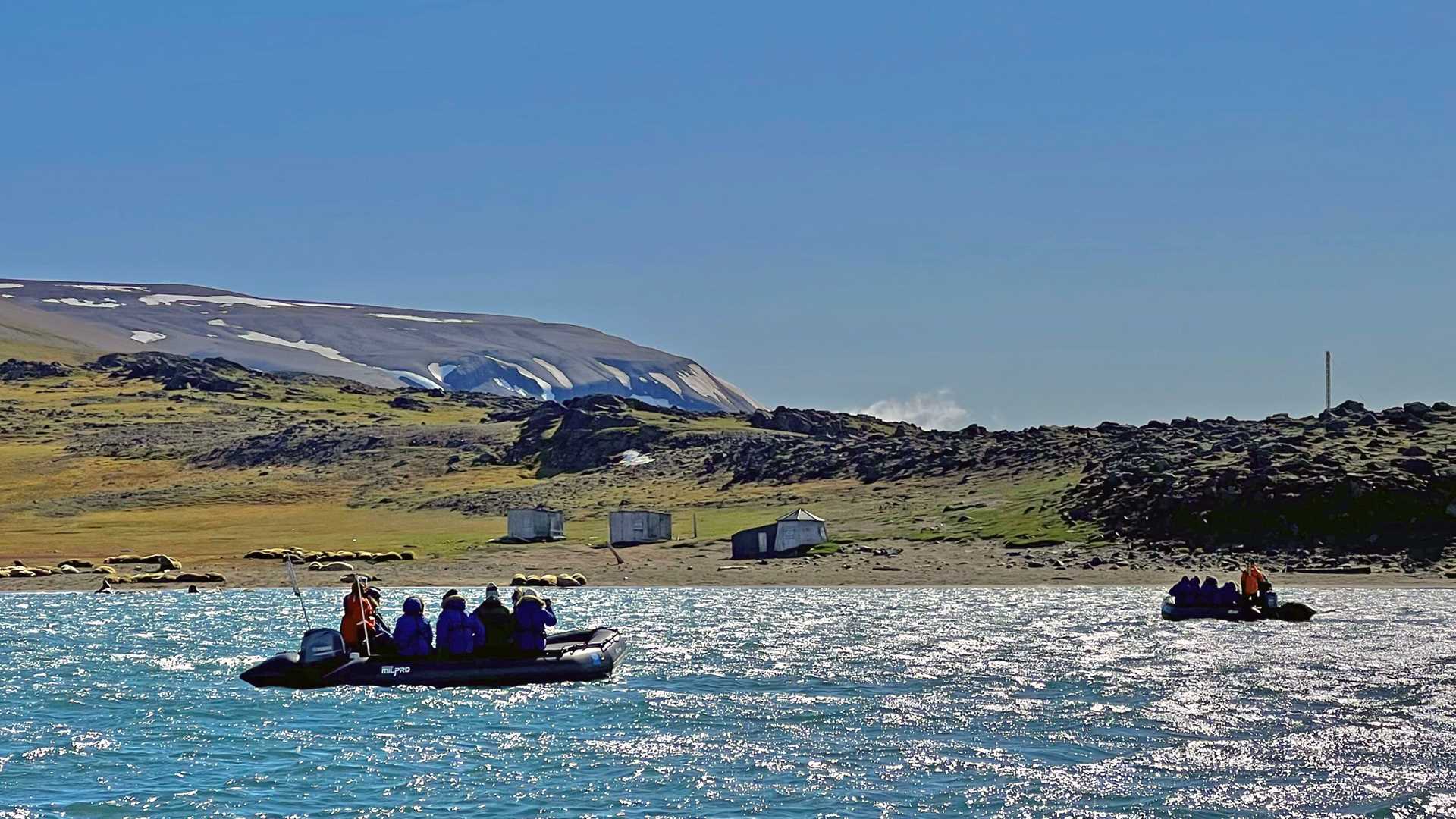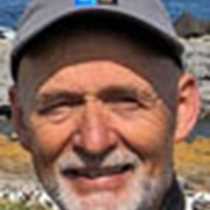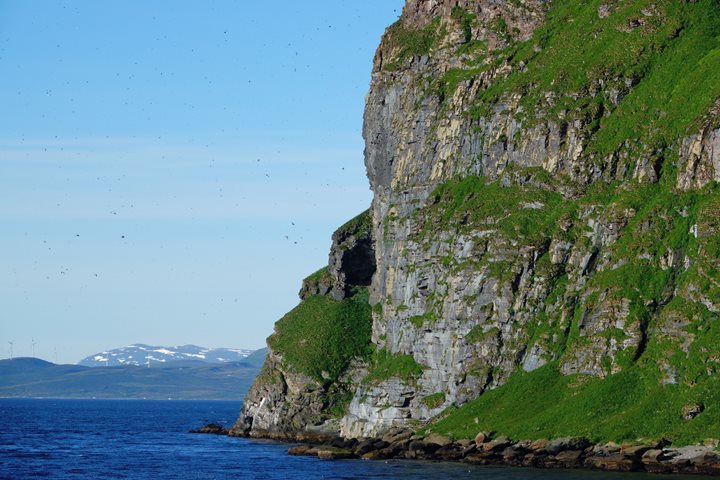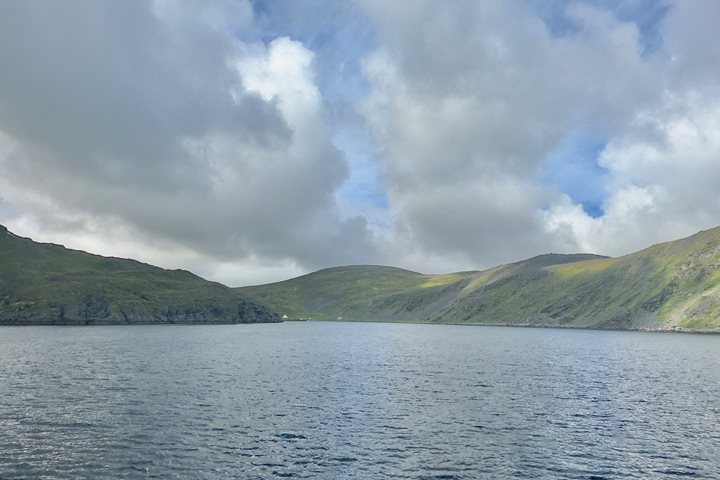This morning, we woke up just off Kapp Lee, a small bay on the northwestern corner of Edgeøya (“Edge Island”) in Eastern Svalbard. Edgeøya is the third largest island in the archipelago, and the area is known for its varied wildlife. The island used to be one of the most popular areas for trapping in Svalbard, and the hut at Kapp Lee was used by wintering trappers from Northern Norway for many years. The weather was inviting for a Zodiac cruise towards the bay at Kapp Lee, giving us hope of finding a group of walruses that often haul out there. And our hopes were certainly met! From a proper viewing distance, we enjoyed the sight of a huge crowd of this iconic Arctic creature, probably more than a hundred animals closely hauled out on the beach. We also got to see some walruses popping up as they foraged in the bay.
After lunch, most of the guests chose to go ashore at Russebukta on the southwestern part of Edgeøya. This area has a relatively lush tundra that sustains a rich population of the endemic Svalbard reindeer. During our hikes of various lengths, we spotted a few reindeer and a good variety of birds: barnacle geese, king eiders, common eiders, red-throated divers (loons), long-tailed ducks, red phalaropes, purple sandpipers, black-legged kittiwakes, northern fulmars, and snow buntings. This is quite a good proportion of the regular breeding bird species in Svalbard. A number of saxifrages and other arctic flowers were also a delight to see. As the hikers started turning towards the landing site, a polar bear and her cub were spotted in the distance. Staff was on hand to ensure safety, and hiking groups made their way back to the Zodiac site.
A recap before dinner completed our adventurous day with short talks on what we experienced, including the walruses, the reindeer, the local trapping history of Kapp Lee, and a video captured by the diving team from yesterday’s stop near Alkefjellet.
This was our last day of outings in Svalbard, and we are now heading south for more adventures on the Norwegian mainland.







